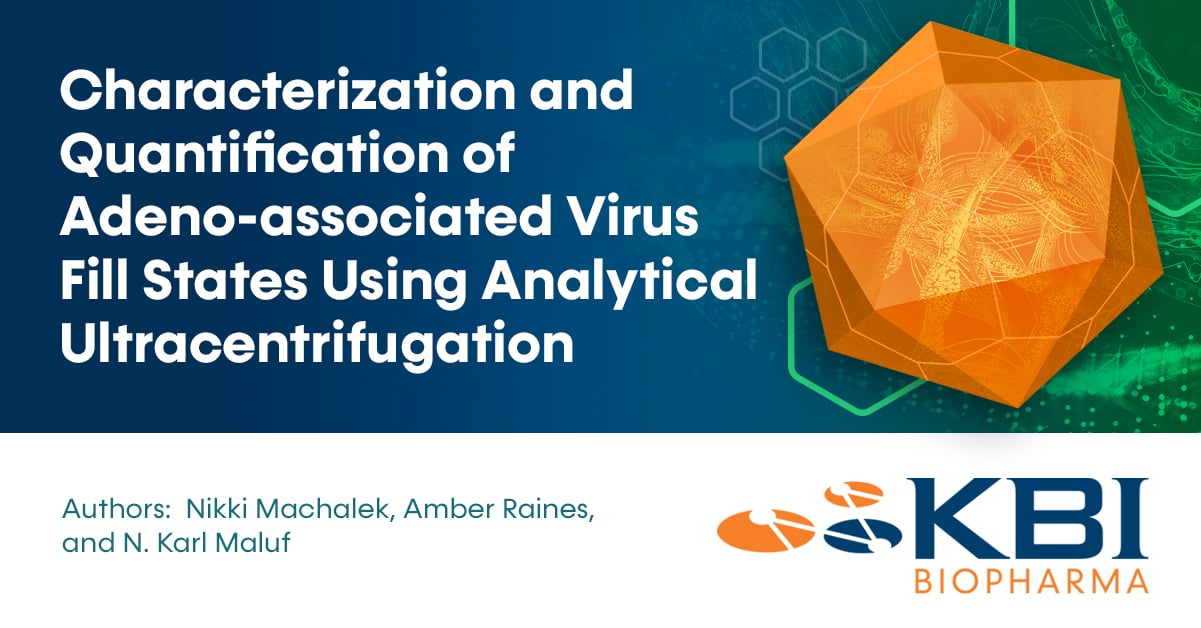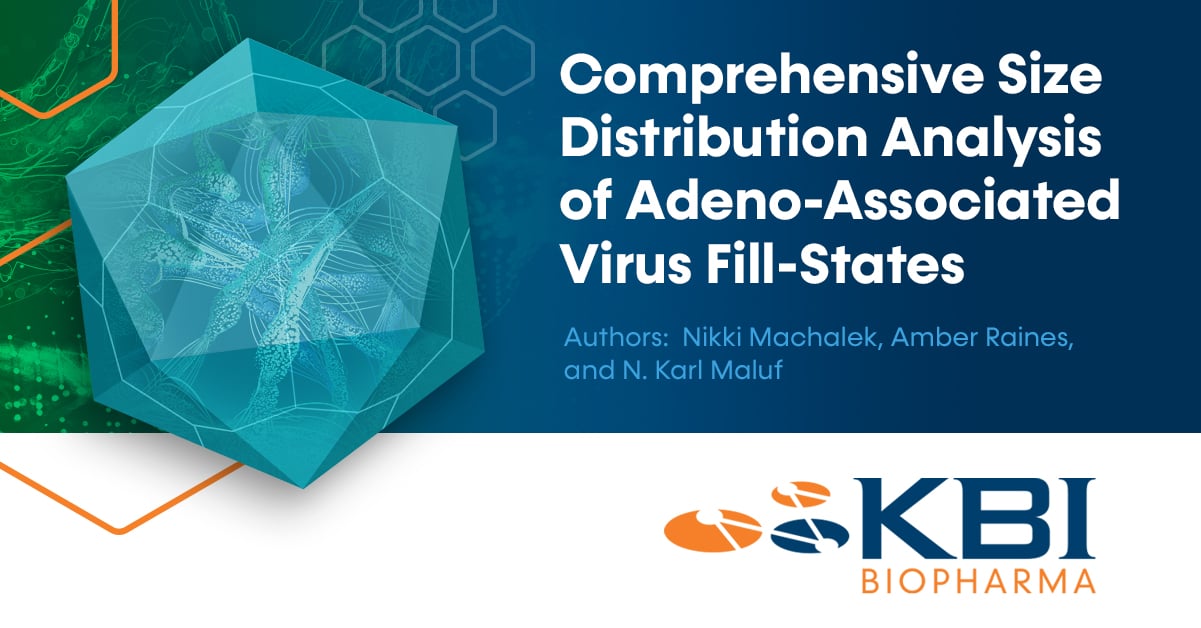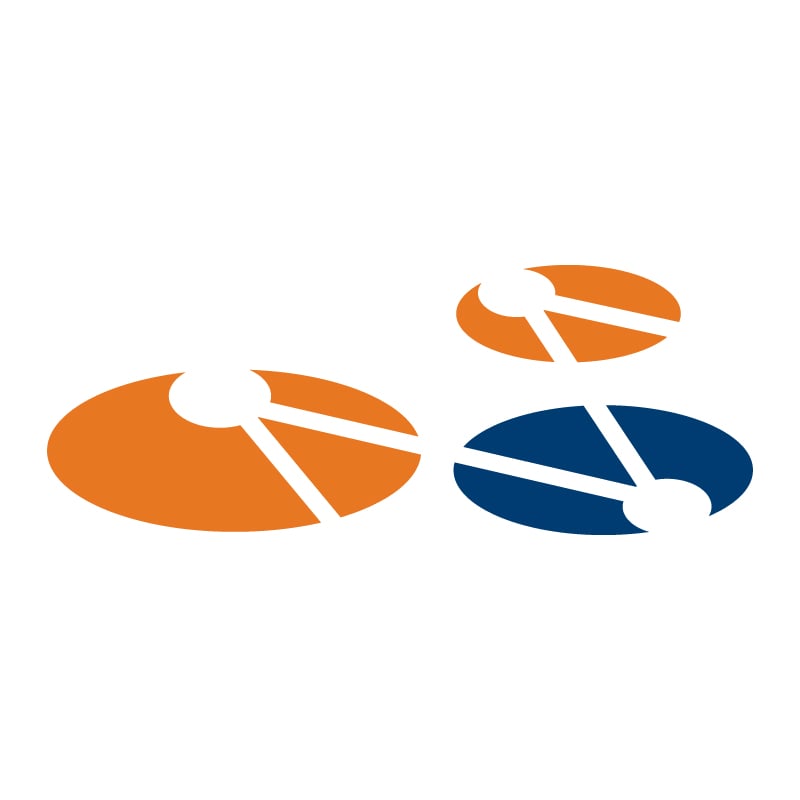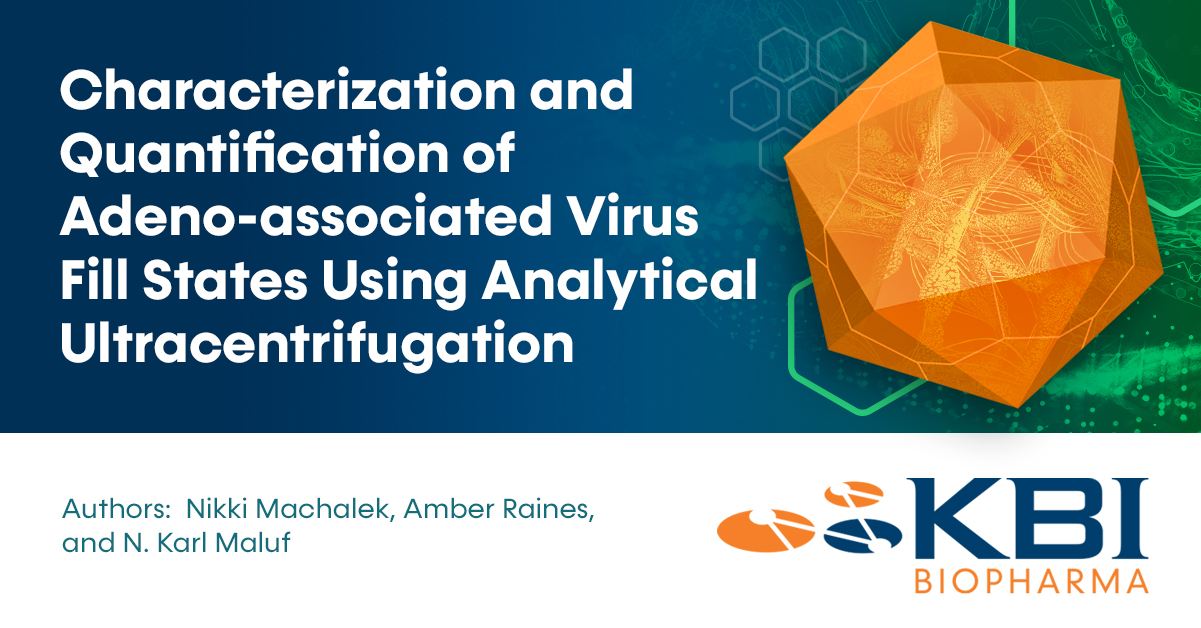Recombinant adeno-associated viruses (AAV) are an increasingly common vector for gene therapy, with two such treatments already approved by the US FDA.
In AAV-mediated gene therapy, the therapeutic drug substance is the single-stranded DNA, which is encapsulated within a proteinaceous capsid that serves as a means of delivery for the drug product. Purified AAV preparations, however, commonly contain a heterogeneous amount of DNA, spanning from empty capsids, partially filled capsids, fully-packaged capsids (these are the intended drug product), overpackaged capsids, viral capsid aggregates, capsid fragments, and free-floating DNA. Given this makeup, the characterization and quantification of these species is critical to ensuring the safety and efficacy of gene therapy treatments.
At KBI Biopharma, we have adopted a next-generation approach to characterizing these AAV-mediated gene therapies. We combine the size distribution of AAV products using sedimentation velocity analytical ultracentrifugation (SV-AUC) with multi-wavelength analysis (MWA), allowing us to accurately identify each resolved species. Our streamlined approach using cutting-edge techniques enables thorough characterization of the various capsid fill-states present in an AAV product and is currently the only technique that is delivering this level of precision.

Characterization and Quantification of Adeno-associated Virus Fill States Using Analytical Ultracentrifugation (AUC)
Poster Presentation
Nikki Machalek, Amber Raines, and N. Karl Maluf
Building on the recent work by Maruno et al1 that established the use of AUC to characterize and quantify the protein and nucleic components of various species observed according to size distributions, the team at KBI Biopharma created an optimized and streamlined workflow to provide a more comprehensive description of AAV size distributions, using this analysis to identify empty, partially-packaged, and full capsids, calculating the ratio of protein to DNA present in well-resolved species, and comparing the multi-wavelength results with the expected values that arise from a consideration of the shape properties of AAVs. This approach helps to eliminate false peak identification. Furthermore, a statistical analysis of the measurement precision has enabled the establishment of acceptance criteria for fundamental measures like main peak sedimentation coefficient, peak percentages, and capsid fill state.
Download the Poster >>

Comprehensive Size Distribution Analysis of Adeno-associated Virus Fill States
Poster Presentation
Nikki Machalek, Amber Raines, and N. Karl Maluf
In support of developing “gold standard” analytical workflows that streamlines and optimizes characterization of the various capsid fill states that are present in AAV products, the team at KBI Biopharma performed a comprehensive and targeted comparison of SV-AUC combined with MWA with two orthogonal separation methods: sedimentation equilibrium (SE) using CsCl density gradient analysis and size exclusion chromatography coupled with multiple angle light scattering (SEC-MALS). Overall, AUC emerges as an excellent technique to characterize size distribution as SV-AUC separates based on size (molecular weight) and shape of the species and CsCl SE-AUC separates based on particle density. In contrast, SEC-MALS struggles to measure size distribution as it separates based on hydrodynamic radius, which makes it difficult to measure various fill states due to the nearly identical hydrodynamic radius of various fill states. The SEC-MALS method assumes that the mixture consists of either empty or full virus particles, and therefore misconstrues partially packaged or over-filled capsids.
Download the Poster >>
Key Takeaways
AAV-mediated gene therapy shows incredible promise and is quickly becoming an extensively used vector for gene therapy. The drug product itself is the encapsulated single-stranded DNA genome (one copy). However, a manufacturing challenge arises: purified AAV products can be heterogenous in their capsid fill states (empty, partial, full, or overpackaged) along with containing capsid aggregates and fragments and/or free-floating DNA. For this reason, it is necessary to characterize and quantify these species to ensure safety and efficacy of gene therapy treatments.
At KBI Biopharma, we are leading the way in fully characterizing the size distribution of AAV products using SV-AUC combined with multi-wavelength analysis, giving us the ability to accurately identify each resolved species. This combination of gold-standard techniques characterizes and quantifies the various capsid fill-states present in an AAV product. SV-AUC with MWA is the gold standard when it comes to accurately analyzing AAV size distributions, and this workflow can replace the traditional four or more assays used to determine total capsid titer, total DNA titer, the various capsid fill-state titers, and the aggregate profile. This unique approach provides the most precise and comprehensive analysis possible for characterization of AAV products.
Have an AAV project that needs analytics? Let’s talk!
Contact our team today to get your AAV analytics underway. At KBI Biopharma, our deep expertise in analytics and continuous development ensure you’re getting the best possible data at every stage of your project.
1. Maruno T., Usami K., Ishii K., Torisu T., and Uchiyama S. (2021) Comprehensive Size Distribution and Composition Analysis of Adeno-Associated Virus Vector by Multiwavelength Sedimentation Velocity Analytical Ultracentrifugation. Journal of Pharmaceutical Sciences, 110:3375-3384.

 KBI Biopharma
KBI Biopharma


